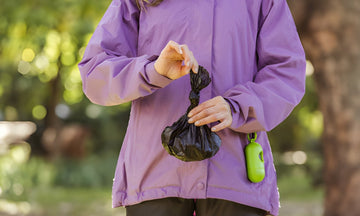Dog Waste Composting Guide
Turn your pet's waste into garden gold safely and sustainably
Why Compost Dog Waste?
- Reduces landfill waste by up to 275 lbs per dog annually
- Creates nutrient-rich soil amendment for ornamental plants
- Eliminates plastic bag waste from disposal
- Reduces environmental impact of pet ownership
- Costs nothing after initial setup
Important Safety Note
This compost is only suitable for ornamental plants, never for vegetable gardens or edible crops.
Space Assessment
Let's check if you have adequate space for composting
Space Requirements
You'll need a minimum 3×3 feet (1×1 meter) area for effective composting. This space should:
- Have good drainage (not in a low-lying area)
- Get partial shade (not full sun all day)
- Be easily accessible for maintenance
- Be away from water sources (at least 10 feet)
- Have level or gently sloped ground
This space should be away from water sources and in a well-draining area.
Do you have a suitable 3×3 feet space available?
Choose Your Method
Select the composting method that works best for you
DIY Wooden Bin Method
Benefits:
- Easy to turn and maintain
- Better temperature control
- More professional appearance
- Easier to harvest finished compost
Hole in Ground Method
Benefits:
- No materials to buy
- Natural insulation from soil
- Low visibility solution
- Minimal setup required
Congratulations!
You've successfully set up your dog waste composting system!
What's Next?
First 2 weeks
Monitor temperature and add water if needed
Bi-weekly
Turn your compost for proper aeration
6-12 months
Harvest your finished compost for garden use
Final Reminder
Remember: This compost is only suitable for ornamental plants, never for vegetable gardens or edible crops.


'/%3E%3Ccircle cx='60' cy='45' r='18' fill='%23f4c2a1'/%3E%3Cpath d='M42 75 Q60 90 78 75 Q78 95 60 100 Q42 95 42 75' fill='%23f4c2a1'/%3E%3Cpath d='M45 40 Q60 25 75 40 Q75 35 60 30 Q45 35 45 40' fill='%23d4a574'/%3E%3Ccircle cx='52' cy='50' r='2' fill='%23333'/%3E%3Ccircle cx='68' cy='50' r='2' fill='%23333'/%3E%3Cpath d='M55 58 Q60 62 65 58' stroke='%23333' stroke-width='1.5' fill='none'/%3E%3C/svg%3E)



